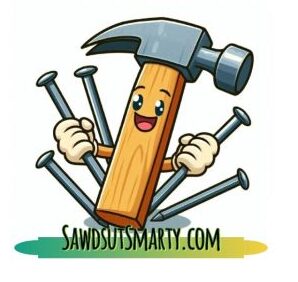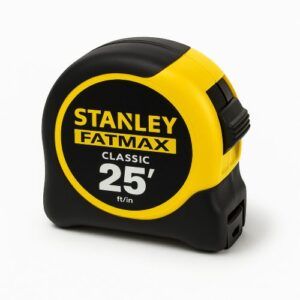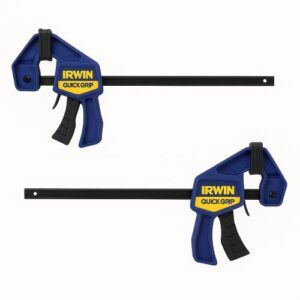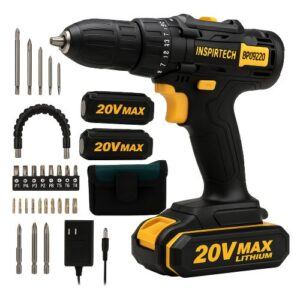If you’re just getting started in woodworking, choosing the right tools can feel overwhelming.
That’s exactly why I put together this guide: to walk you through the essential woodworking tools for a beginner and show you how each one fits into a simple, frustration-free workflow.
No clutter.
No confusion.
Just the core tools that help you cut, shape, smooth, and assemble your first projects with confidence.
Whether you’re building a small shelf, a birdhouse, or your very first piece of furniture, these tools form the backbone of every successful beginner setup.
And the best part?
You don’t need a massive shop or a massive budget — just the right tools in the right order.

🛠️ Why These Tools Made the List
Before we jump into the tools themselves, I want to keep this simple and helpful for anyone just getting started. There are tons of woodworking tools out there, but beginners only need a small handful to build clean, sturdy projects without wasting time or money.
That’s why I’ve highlighted the exact tools I reach for in my own shop — the ones that offer the best balance of quality, price, and ease of use for someone learning the basics.
You don’t need high-end gear or a huge workshop.
Just dependable tools that work.
As you read through this guide, you’ll see a few recommended products along the way.
These are tried-and-true picks that fit naturally into the beginner workflow we’re about to walk through.
How These Three Tools Work Together
These first three tools — your tape measure, clamps, and drill — form the backbone of nearly every beginner woodworking project.
You measure your cuts, secure your boards so nothing shifts, and then drill the holes or drive the fasteners that hold everything together.
Mastering this simple workflow sets you up for clean, square builds every single time.
Once you’re comfortable with measuring, clamping, and drilling, it becomes much easier to tackle cutting and sanding.
That’s where the next two tools come into play, helping you shape your project and bring everything to a smooth, finished surface.
1. Tape Measure: Your First Precision Tool
Every woodworking project — no matter how simple — starts with accurate measurements.
A good tape measure keeps your cuts clean, your boards consistent, and your frustrations low.
When you’re learning, tiny mistakes add up fast, so having a tool you trust makes all the difference in keeping your project square and tight.
You’ll reach for this tool more than anything else in your shop, which makes it the perfect place to begin.
🌟 Amazon Product Suggestion:
✔️ STANLEY FATMAX 25-Foot Tape Measure
A tough, reliable tape measure built for real job-site use. The STANLEY FATMAX 25′ delivers crisp easy-read markings, a strong standout, and the perfect length for woodworking and outdoor projects.
Why it’s great:
✔️ Heavy-duty, long-lasting construction
✔️ Easy-read numbers for quick measuring
✔️ 25-foot length covers indoor and outdoor builds
✔️ Smooth standout for measuring long boards solo
✔️ Trusted brand with thousands of great reviews
👉👉 Pro Tip: Always measure from the same edge of each board.
This keeps all your measurements consistent and eliminates creeping errors that can throw your whole project out of square.
Next up: Clamps — the extra pair of hands every woodworker needs.
2. Clamps: The Extra Hands Every Woodworker Needs
Clamps are one of those tools you don’t fully appreciate until the moment you need them —
and then you can’t imagine building without them.
They keep your boards steady, hold joints tight while the glue dries, and give you the stability you need for drilling, assembling, or squaring anything up.
For beginners, clamps solve the biggest frustration in woodworking:
trying to hold everything in place while doing something else.
When your material stays put, your cuts get cleaner, your joints get tighter, and your projects go smoother from start to finish.
🌟 Amazon Product Suggestion:
✔️ IRWIN QUICK-GRIP 6” One-Handed Mini Bar Clamp Set
(4-Pack)
These IRWIN Quick-Grip clamps are my go-to shop workhorses. Light, fast, and truly one-handed, they’re perfect for small builds like display cases, shelves, frames, and trim. Even with their compact size, they deliver solid pressure, lock cleanly, release smooth, and won’t dent your walnut thanks to the non-marring pads. If you want clamps you’ll actually enjoy using — these are the ones.
Why it’s great:
✔️ One-handed operation makes positioning and clamping effortless
✔️ Strong, consistent grip for small cabinet and display case builds
✔️ Soft, non-marring pads protect delicate woods like walnut and cherry
✔️ Lightweight design lets you run several clamps at once without fatigue
✔️ Perfect for tight spots where full-size bar clamps won’t fit
✔️ Extremely reliable — no slipping, no bending, no cheap-plastic flex
✔️ Great for beginners and pros who want fast, frustration-free clamping
👉👉 Pro Tip: Always use at least two clamps when gluing panels or frames.
It keeps your pressure balanced so your project doesn’t twist or warp as it dries.
3. Drill: Power and Precision in One Tool
A good drill is one of the most important tools you’ll ever add to your woodworking setup.
It does way more than just drill holes — it drives screws, assembles projects, installs hardware, and speeds up almost every part of the build.
For beginners, a reliable drill removes the frustration of hand-driving screws, crooked pilot holes, or parts that won’t stay together.
When your boards are measured, clamped, and ready, the drill becomes your “go-to” for turning loose pieces of wood into a solid, square project.
Whether you’re building a small shelf, a birdhouse, or your first piece of furniture, your drill is the tool that brings it all together.
🌟 Amazon Product Suggestion:
✔️ INSPIRITECH 20V Cordless Drill
(My Personal Choice!)
This is the cordless drill I use in my own shop, and it’s been rock-solid. The INSPIRITECH 20V kit includes two batteries, a charger, drill/driver bits, a flexible extension, and a handy tool bag. With 24 torque settings and a comfortable grip, it’s perfect for mailbox builds, repairs, and everyday woodworking.
Why it’s great:
✔️ Two 20V batteries — work nonstop
✔️ Includes bits, extension, and tool bag
✔️ Lightweight and easy to control
✔️ Strong enough for outdoor projects
✔️ Affordable, complete starter kit
👉👉 Pro Tip: Use a small pilot hole before driving any screw into hardwoods.
It prevents splitting, keeps the screw straight, and gives you a cleaner, tighter joint every time.
✔ Final Thoughts…
Woodworking doesn’t have to be complicated — it just takes the right tools, a simple workflow, and a little confidence to get started.
With a solid tape measure for accuracy, dependable clamps for stability, and a good drill for assembling your cuts, you’ve already got the core gear needed for countless beginner projects.
As you keep building, you’ll naturally pick up new techniques, expand your tool collection, and start tackling more ambitious ideas.
But these three essentials will carry you a long way and help you build clean, square, frustration-free projects right from the start.
If you’re ready to take the next step in your woodworking journey, these guides will help you level up your skills:
- Top 5 Essential Tools Every Woodworker Needs
- How To Build a Simple Wooden Toolbox
- How To Build A Wooden Rocking Chair
Keep learning, keep learning, and keep the sawdust flying — that’s where the fun is.
Craft it. Shape it. Own it!
🔧 Need More Plans Or Ideas?
👉👉 Click here to learn more about Ted’s Woodworking Plans:
If you want access to hundreds of additional woodworking projects and detailed tutorials, check out my full review of Ted’s Woodworking Plans.
It’s packed with step-by-step builds that are perfect for weekend projects.
💡 Turn Your Woodworking Passion Into Income
👉👉 Click here to learn more about Wealthy Affiliate
SawdustSmarty.com started as a small hobby — and grew because I finally learned how to build a real website.
If you’ve ever thought about turning woodworking into a side business or income stream, the training at Wealthy Affiliate is hands-down what I recommend.







As someone just beginning to explore woodworking, I’ve found it a bit overwhelming trying to figure out which tools are truly essential and which ones can wait. It’s easy to fall into the trap of overbuying before developing any real skills. In your experience, is it better to invest in quality versions of a few key tools first, or to start with more budget-friendly options while learning the basics? Also, how important do you think it is to take a formal class versus learning through online tutorials and hands-on trial and error?
Thank you for your comment Slavisa… I can understand how it can be overwhelming for someone just starting out in woodworking. Yes, in my opinion, I think it is better to invest in just a few good quality tools in the beginning as you are learning this new skill and then pick up another tool here and there as needed along the way. Pretty soon, you will have a shop full of good quality tools to work with.
In my opinion, I believe it would be best to do both: take a formal class and learn through online tutorials. I have learned a lot myself just watching videos… and I have destroyed a lot of projects through trial and error. It’s a learning process that takes time to master.
Thanks again; Wayne